買器材 » 模組化合成器 » Effects » Audio Damage ADM23 EOS
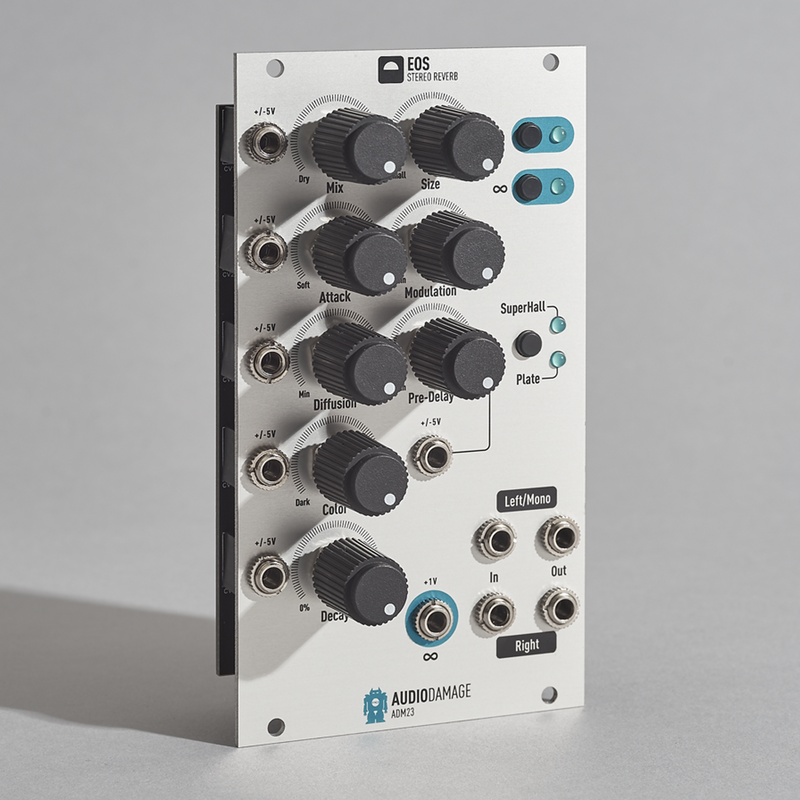
A long-time favorite of our plug-in users, the Eos reverb is now available in Eurorack! This module is code-identical to the Eos plug-in, with the Superhall and Plate algorithms made famous in the original. With an easy-to-understand interface, and a 48k/24 bit true stereo audio path, Eos is a top-of-the-line commercial studio quality reverb for your Eurorack system.
The Plate algorithm in Eos is an unique implementation of the traditional digital plate, rich and full, perfect for drum and vocal simulation. The Superhall algorithm is designed to emulate the incredibly long, chorusy reverb tails heard on Harold Budd/Brian Eno records, and is what makes Eos amazing on synth sounds.
Controls
Mix - This controls the wet/dry mix. At full anti-clockwise, only the dry signal appears at the outputs. At full clockwise, only the wet signal appears. An equal-power crossfade mixes between the two.
Attack - This controls the presence of the initial early reflections. At full anti-clockwise, the reflections are more or less equal. At full clockwise, an exponential decay occurs, with the initial reflection being much louder. This results in a more percussive and rich reverb tail.
Diffusion - This controls the amount of diffusion applied to the early reflections. At full anti-clockwise, no diffusion is applied, and the early reflections are very clear. At full clockwise, the early reflections are entirely "smeared." Essentially, it controls the smoothness of the reverb.
Color - This is an omnibus control for the several EQ parameters in the algorithm. At full anti-clockwise, the reverb tail will be very dark, and have no high end, and at full clockwise, it will be very bright, and have no low end. In the middle, no EQ is applied.
Decay - This is the decay time of the reverb tail (called "RT60" in the 'verb business.) At full anti-clockwise, you will hear almost no tail, and at full clockwise, the RT60 (or time to -60dB) will be over a minute long in Superhall mode, and about 45 seconds in Plate mode with Size at maximum.
Size - This controls the physical size of the simulated hall or plate. Together with the Decay control, this describes the personality of the reverb. Note that this control has no modulation input, and you will experience some noise bursts if you adjust it while there is audio circulating in the reverb tank. This is unavoidable, as the control changes the times of over a dozen delays.
Modulation - This controls the amount of modulation applied to the delays in the reverb tank. In effect, it is a chorus control. It is a subtle control, and only really apparent with a long decay. At full anti-clockwise, the reverb tail will be icy and clean, while at full clockwise, it will be rich and full.
Pre-Delay - This controls the amount of time between when the original signal is heard, and when the signal enters the reverb tank. The response is somewhat different depending on the mode; in Plate mode, the first early reflection will occur at the set time, and so on. In Superhall mode, this effectively controls the "spread" of the early reflections.
Lock & Infinite - These two buttons control the Infinite mode (or "freeze effect.") When Lock is illuminated, Infinite is a toggle switch, and when Lock is not illuminated, Infinite is a momentary switch. The Infinite jack responds to a +1V trigger when locked (which turns Infinite on and off) and a +1V gate in unlocked, where the Infinite will be activated for the duration of the gate. The effect itself basically gives the reverb an infinite decay. Note that the inputs are still active, so further input after the Infinite mode is activated will accumulate.
Algorithm - This button switches between Superhall and Plate mode.
Panel Memory - The Algorithm and Lock buttons remember their state. Once you make a selection, the value is written to EEPROM memory after 30 seconds. If the module loses power before 30 seconds, it will not remember the selection, and will revert to the previous saved state.
I/O - Eos has a 48kHz sample rate at 24 bits, with 32-bit floating point internal operation. The I/O is true stereo, and changes internal routing based on what is plugged in. For mono use, just use the left side I/O. For mono to stereo (the normal configuration as a send effect), use the left input and both outputs. The internal DSP will route itself accordingly.
Mechanical Info - Eos has a 125ma current draw on the +12V rail, approximately 10ma on the -12V rail. It has an on-board regulator, and does not require +5V. It is 14HP in width, and has a depth of 25mm. It has a USB port on the backplane for firmware updates.
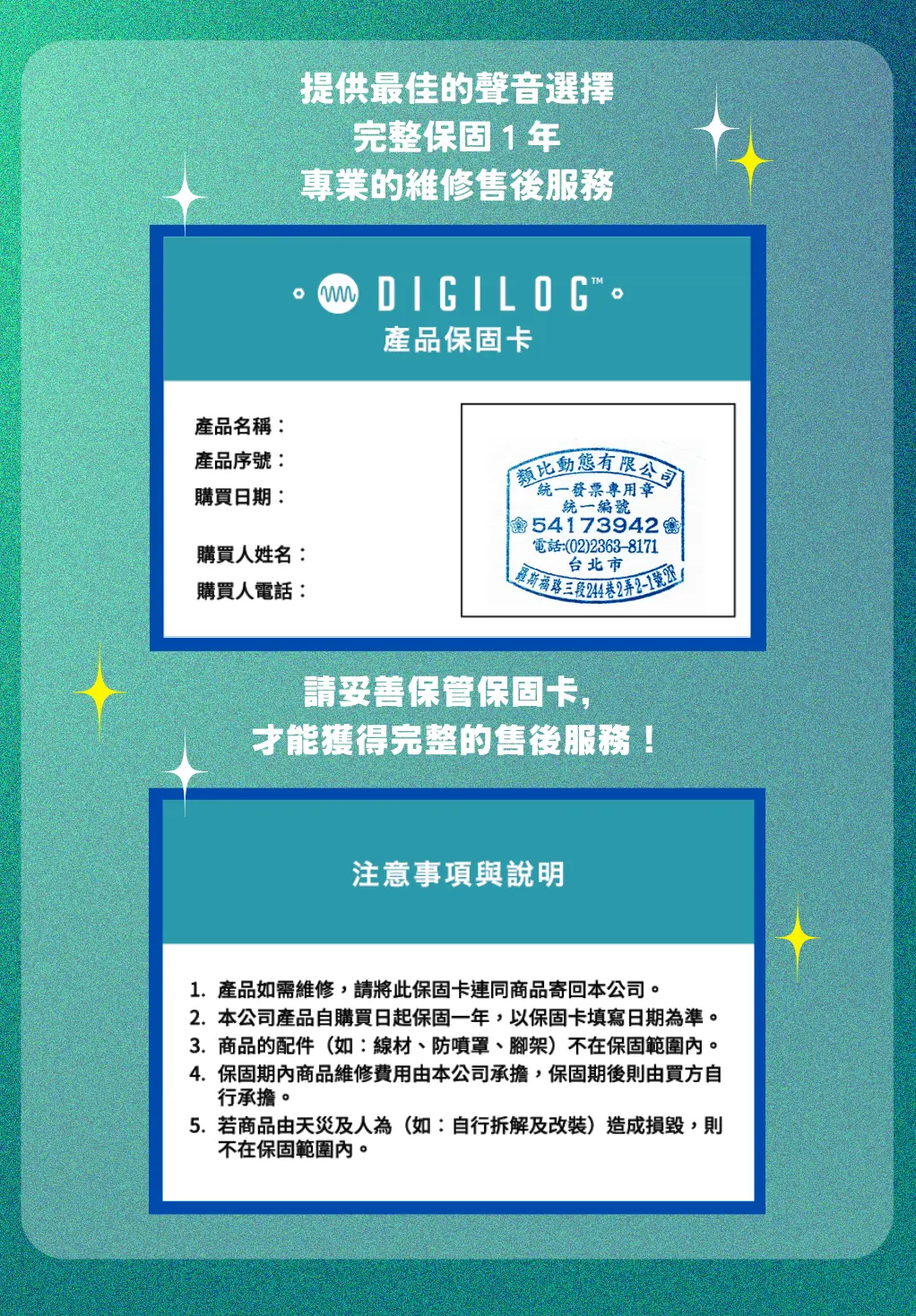
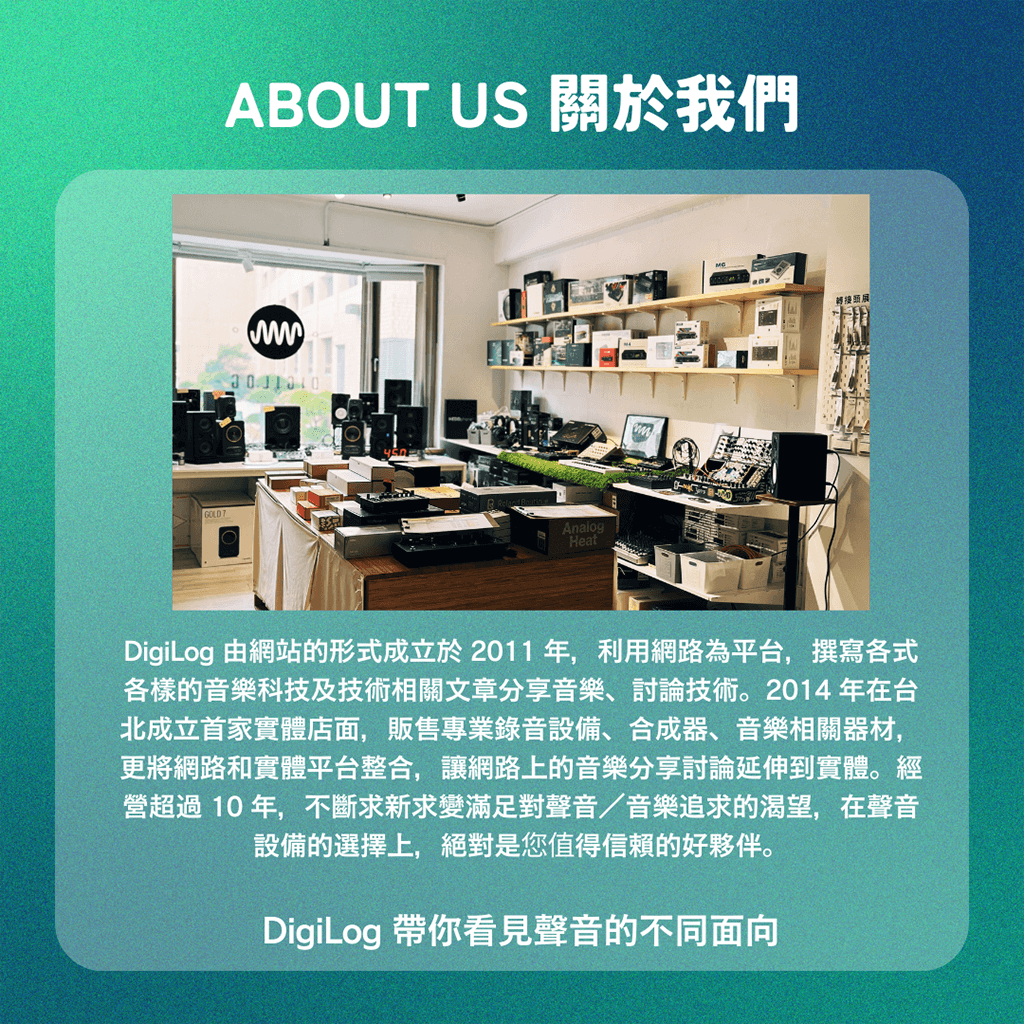

使用評論:
購物須知 Q&A
Q1 . 何謂鑑賞期?
依消費者保護法之規定,網路購物享有商品到貨日起算七天猶豫期。必須提醒您,「 猶豫期並非試用期 」,鑑賞期目的為提供您檢視、參考,並非提供您商品的試用,若您收到商品經檢視後有任何不合意之處,請勿拆封使用,並立即依照退貨規定辦理退貨。商品退換貨必須是完整包裝,且勿缺漏各項配件及贈品,或自行拆損原廠包裝與外盒。若有任何遺失、損毀或是缺件,可能會引響到您的退換貨權益,也可能依照損毀狀況扣除復原之相關費用。
Q2 . 如何辦理退換貨?
若您確定要辦理退貨,請務必保持商品全新完整包裝,且勿損毀原廠外盒。包含商品本體、配件、保證書、原廠包裝、附隨說明文件等,均須包含在內,勿缺漏任何一項。若有其他可歸責您的原因,造成商品損毀,將無法辦理退貨,或須將損壞費用於退款中扣抵。但商品如有新品瑕疵問題,則不在此限,享有無條件退換貨服務。
請於鑑賞期內來電或來信,詳細告知我們欲退換貨之原因、商品現況、電話,及取件的地址,我們將於 3 - 5 個工作天內安拍退貨事宜。
Q3 . 如何收到退款、需要多少時間?
依不同付款方式,退款方式與時間也不同,說明如下:
信用卡付款:帶我們收到退貨商品後約 5 至 7 個工作天,款項將會退至您信用卡帳戶。請依信用卡結帳日判斷,刷退款項可能列於本月或次月帳單,退款進程請向信用卡發卡銀行確認。
匯款:請聯絡 service [at] digilog.tw 並提供您的完整匯款資料(銀行、分行名稱、銀行代號、戶名、帳號),我們將派快遞公司前去取回您的退換貨商品,並於 5 至 7 個工作天,將款項匯還至您所指定的帳戶。
Q4 . 商品維修的運費需要自行負擔嗎?
商品維修的往返運費須自行負擔。


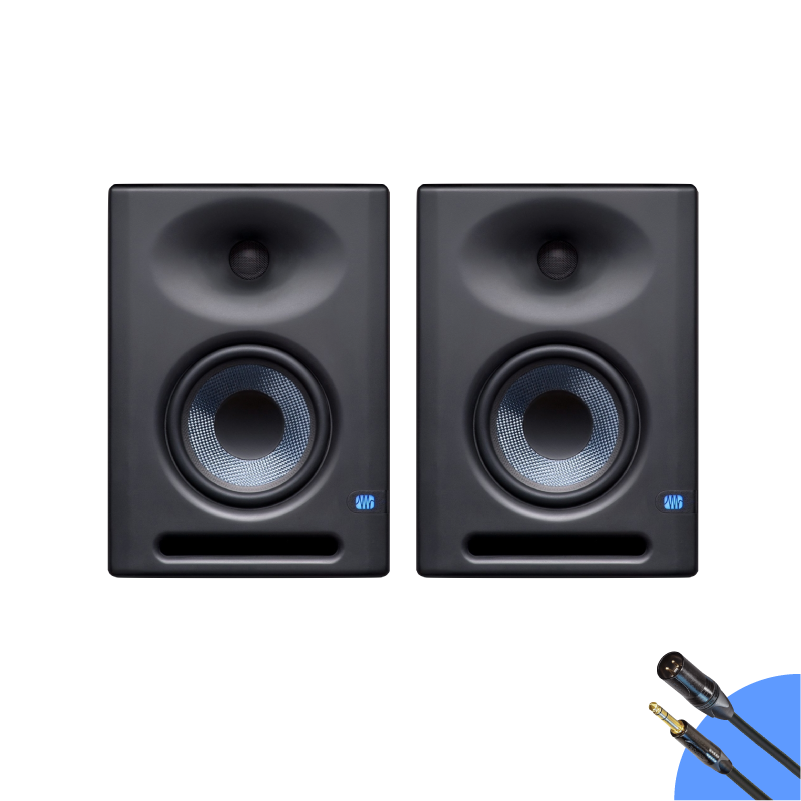




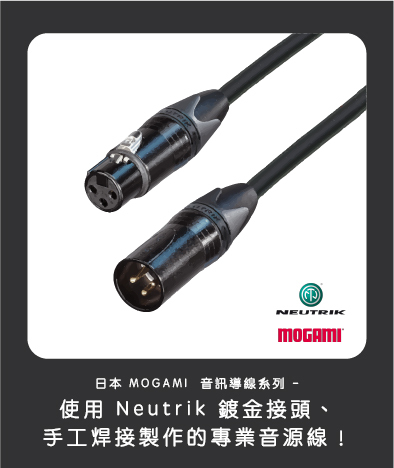



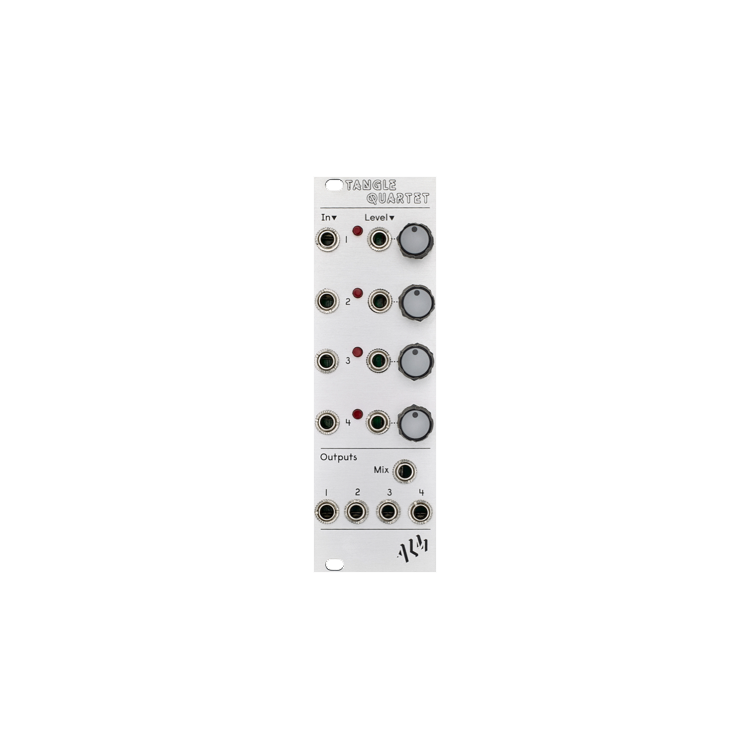

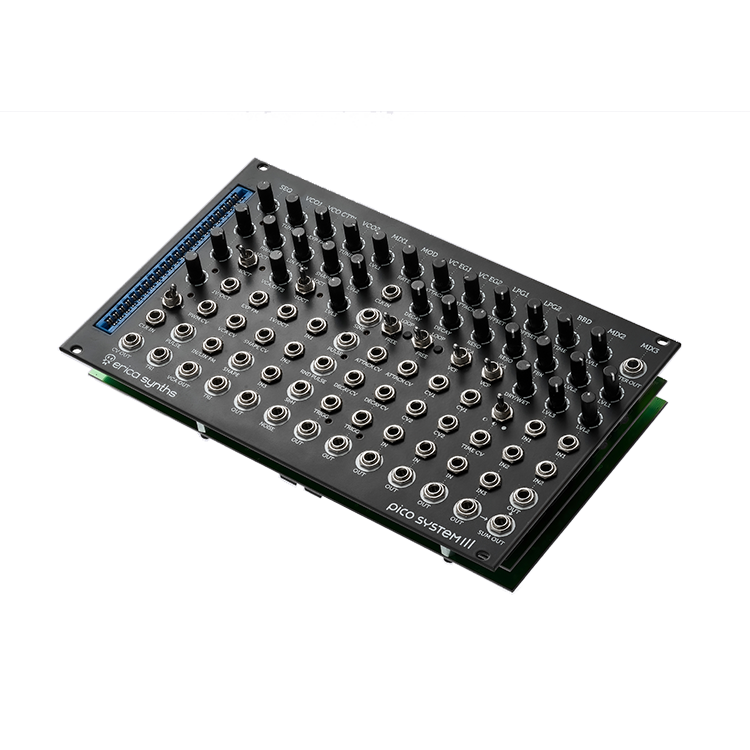
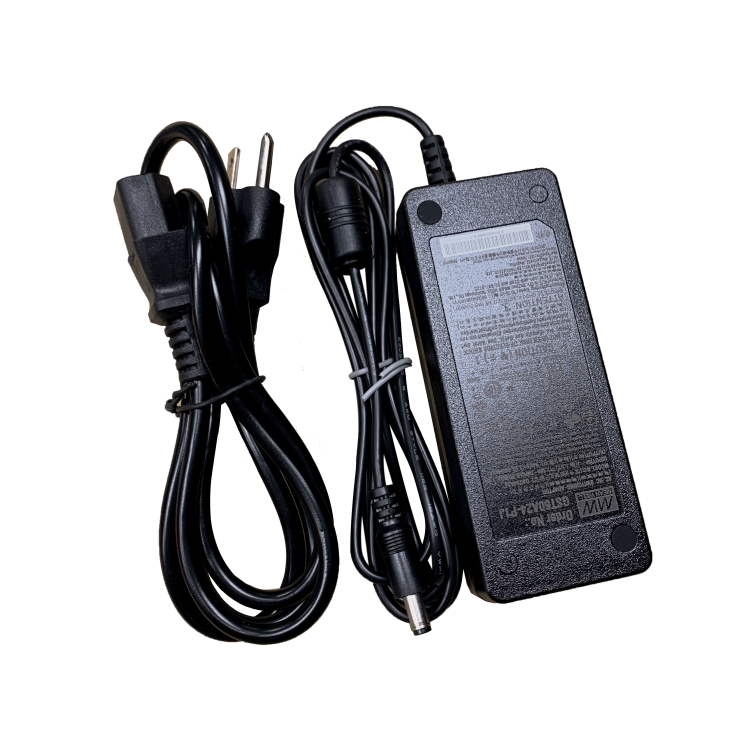
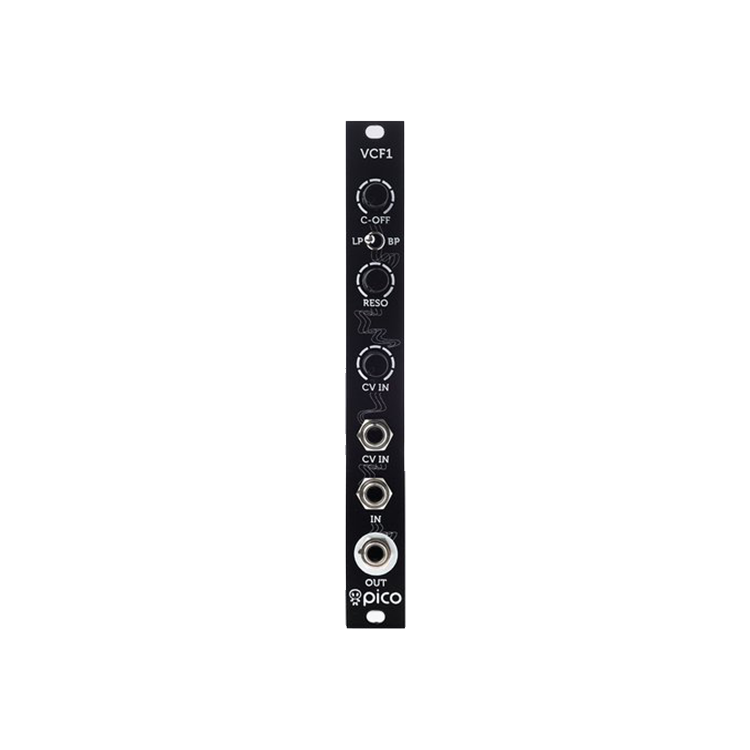
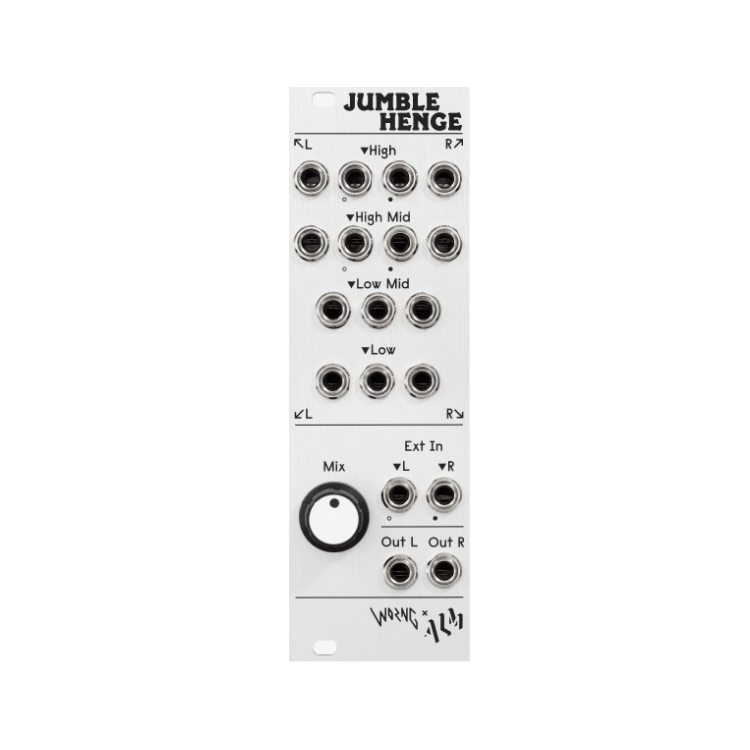


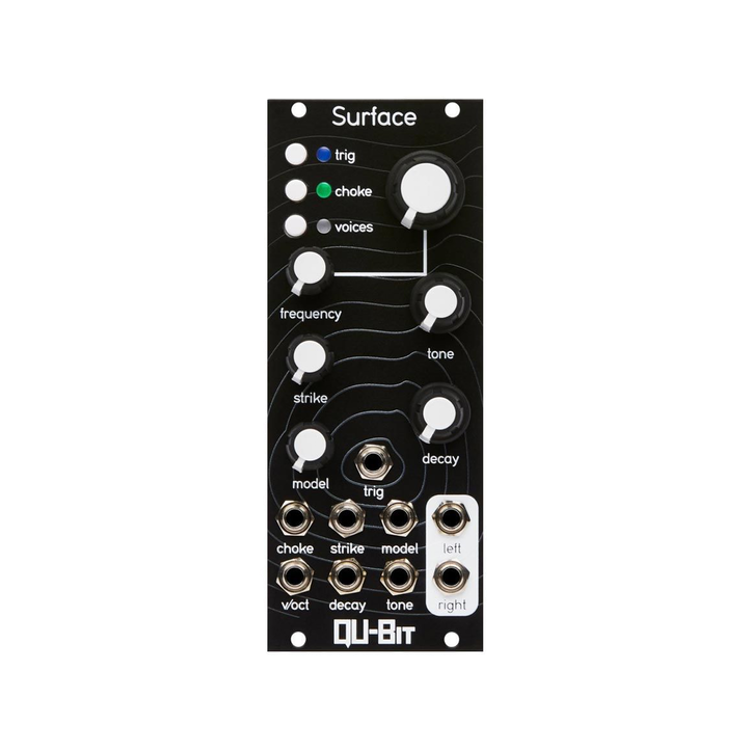

目前尚無評論